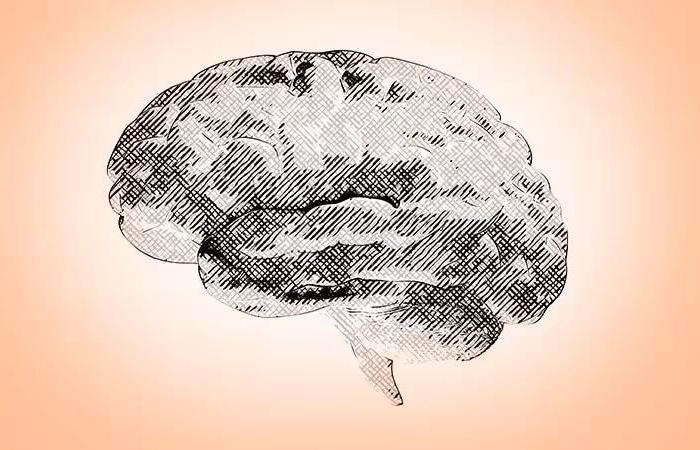Newly published research has identified an increase in the size of the human brain over the years, which could help explain the reduction in the incidence of dementia.
The analysis, which evaluated secular trends based on neuroimaging data from the Framingham Heart Study, revealed an increase in intracranial volume, cortical gray matter, white matter, hippocampal volume, and cortical surface area in participants born in the 1970s compared to individuals born in the 1930s.
“Our hypothesis is that increased brain size produces a greater ‘reserve’ against diseases associated with aging, reducing the overall risk of dementia,” he told Medscape physician Dr. Charles DeCarli, director of Alzheimer’s Disease Research Center It’s from Imaging of Dementia & Aging Laboratorylinked to the Department of Neurology and Center for Neurosciences at University of California, DavisIn the USA.
The study was published online on March 25, 2024 in the journal JAMA Neurology.
Protection against dementia?
As published by Medscapean earlier article — also based on Framingham Heart Study — suggested that the incidence of dementia is decreasing.
“This difference was seen in participants who had at least completed high school and was not affected by differences in vascular risk. Our study was stimulated by this finding and by the possibility that differences in brain size are occurring across the three generations followed by the Framingham Heart Studywhich could explain greater resilience to dementia,” said Dr. Charles.
The cross-sectional study used data from 3,226 participants from the Framingham Heart Study (53% female) born between 1930 and 1970, none of whom had dementia or a history of cerebrovascular accident (CVA). Subjects underwent brain MRI at a mean age of 57.7 years.
Compared to participants born in the 1930s, those born in the 1970s had a 6.6% increase in intracranial volume (1,321 mL vs. 1,234 mL), 7.7% in the white matter (476.3 mL vs. 441.9 mL), 5.7% in the hippocampus (6.69 mL vs. 6.51 mL) and 14.9% in cortical surface area (2,222 cmtwo vs. 1,933 cmtwo).
A 21% reduction in cortical thickness was also observed in the same period, coinciding with an increase in intracranial volume, cerebral white matter and cortical surface area.
“We were surprised to discover that the brain became larger, but the cortex slightly shrank. The apparent thinning of the cortex would be related to the increased need for expansion of the cortical ribbon, based on hypotheses related to the effects of evolution and cortical development, designed to make neuronal integration more efficient,” said Dr. Charles.
A second analysis, which evaluated a subgroup of 1,145 individuals of similar age groups, born in the 1940s (mean age of 60 years) and 1950 (mean age of 59 years), found similar findings.
“These findings likely reflect both improvements in childhood environmental influences over time, through health, sociocultural and educational factors, and improvements in modifiable risk factors associated with dementia, leading to improved health and greater brain reserve.” ,” the authors wrote.
Although the observed effects are “likely small from an individual perspective, they are likely to be substantial at a population level, adding to the growing literature suggesting that optimal brain development and [obtenção de uma] Optimal health through risk factor modification could substantially modify the effect of common neurodegenerative diseases, such as stroke and Alzheimer’s disease, on the incidence of dementia,” they added.
One of the limitations of the analysis is that the study population Framingham was predominantly non-Hispanic, white, healthy, and highly educated, therefore not representative of the general US population. Furthermore, the cross-sectional nature of the study also limited causal inference.
An interesting study
“If these results are confirmed by other [estudos] and the observed differences by decade are as large as those reported, this will have important implications for research on aging and dementia,” wrote Dr. Prashanthi Vemuri, Ph.D., affiliated with Mayo Clinicin the USA, in an editorial accompanying the publication of the research.
“First, studies that use brain imaging spanning the entire human lifespan to understand the mechanisms of aging, by aggregating data from individuals over decades and using volumes [cerebrais] of people of various ages are significantly overestimating the degree of decline in brain health, as the baseline brain health of older people is likely already worse,” Dr. Prashanthi pointed out.
“Second, cortical thickness values, often used in dementia studies as a cross-sectional marker of neurodegeneration, showed a greater decline due to secular trends and were not adjusted for intracranial volume. Therefore, these data should be replaced by gray matter volumes adjusted according to intracranial volume to estimate the true degree of neurodegeneration”, he added.
The data also suggests that longitudinal studies based on imaging tests are most recommended when testing hypotheses about brain health, the editorialist wrote.
While this study is “interesting and draws attention to secular trends in brain health, there is still much work to be done to validate and replicate these findings and, most importantly, understand the mechanistic basis of these trends,” he added.
“Could these secular trends in improving brain health be behind the decreased risk of dementia? We still don’t have a verdict, but the authors deserve praise for investigating new paths”, concluded Dr. Prashanthi.
The research was funded by National Institute on Agingfor the National Institute on Neurological Disorders and Stroke and hair National Institutes of Health. Dr. Charles DeCarli reported having served as a consultant for the Novartis in a heart failure safety study while conducting the research and received consulting fees for companies Eisai It is New Nordisk unrelated to the published study. Dr. Prashanthi Vemuri reported having no conflicts of interest.
This content was originally published on Medscape






